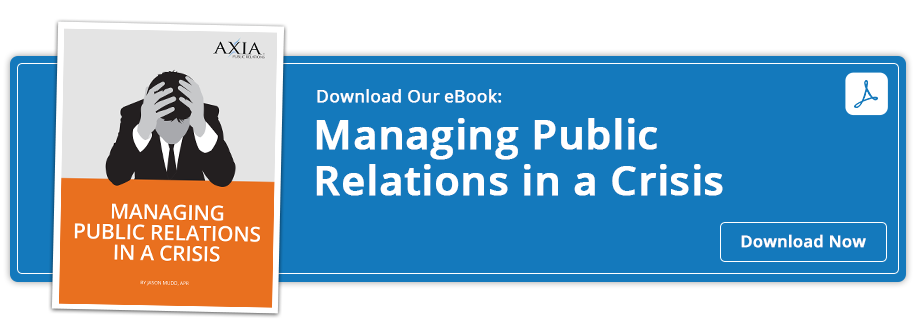 A checklist before worst-case events so you perform well in any incident
A checklist before worst-case events so you perform well in any incident
One of the ways that first responders prepare is to practice. Police, fire and emergency medical personnel prepare themselves for certain situations so that good habits are strengthened and surprises don’t negatively impact their refined skills.
You can prepare too, with public relations. Composing statements on issues that concern risk management in your industry (or things that have happened previously – to you or your competition) means you don’t have to think about everything on your feet.
Thoughtfully consider news events to see what you would need if the same incident or crisis affected your company. Just as you take time to pack for a fun vacation, you should take time to plan for a crisis. Have a drill for an incident that could happen, and consider the following actions as your team responds to a crisis scenario:
Think ahead
During a crisis, if your company takes a preemptive position of providing accurate and timely information (whatever’s known, within reason) before getting behind the curve, your leadership team won’t have to take a defensive position. Any fact introduced by your company rather than being “dug up” by the media will sit better with the public. Make sure your organization makes a good first impression, not a reactionary one.
Designate a credible and informed spokesperson
Audiences weigh the speaker as a large portion of the success of the message, especially since it’s common to “shoot the messenger.” If the messenger is someone with a high level of accountability and responsibility in your organization, a more positive frame of light is set for the delivery of your content. It’s a sign to the audience of how important they are to your business.
Establish a time frame for updates – with flexibility
If your audience knows when the next update will be delivered, it helps reduce their anxiety, regardless of what the organization is saying. But, don’t do it just because you said you would. If there is a valid reason to hold off, like developing facts that will be ready soon after the regular message was to be given, just tell them there is a delay and why. People value their time and if your team wastes it, you will have to gain their trust again – at a cost.
There are messaging guidelines that pertain to your PR, regardless of normal operations or critical incidents. Use this checklist to review the documents you have in your toolkit that just get tweaked according to the crisis details:
Clear, direct statements
-
Use simple language in short clear sentences to reduce confusion.
-
Reduce brand jargon in normal business and it more naturally carries to crises.
The action item
-
Inform your target audience of what they need to do (or what you are doing).
-
Give time frames for response to help manage anxiety.
Key takeaway(s)
-
Identify the most important information that people need to hear – make this information the last thing you include.
-
Make memorable visuals to help keep your positive brand message in focus.
It’s always best to be prepared, and having a good public relations team to help protect and grow your brand is important for the longevity of your organization. Take the first step in the right direction before a PR crisis and download Axia Public Relations’ e-book Managing Public Relations in a Crisis to ready your company today.

 Heather M. Hilliard is a marketing and strategic planning professional with expertise in crisis management communications. Earning two master’s degrees and her international Certified Emergency Manager credential, she has worked during disasters as well as “normal business” to offset impact in preparedness for large- and small-scale events in a variety of industries. She has been an adjunct professor for Tulane University for six years and currently focuses on strategic communications and improvements.
Heather M. Hilliard is a marketing and strategic planning professional with expertise in crisis management communications. Earning two master’s degrees and her international Certified Emergency Manager credential, she has worked during disasters as well as “normal business” to offset impact in preparedness for large- and small-scale events in a variety of industries. She has been an adjunct professor for Tulane University for six years and currently focuses on strategic communications and improvements.
Featured image credit: 123rf.com
Topics: public relations, crisis communications


Comment on This Article